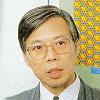- JST Home
- /
- Strategic Basic Research Programs
- /
 ERATO
ERATO- /
- Research Area/Projects/
- Completed/
- NAGAYAMA Protein Array
NAGAYAMA Protein Array

Research Director: Dr. Kuniaki Nagayama
(Professor, College of Arts and Sciences, The University of Tokyo)
Research Term: 1990-1995
The Nagayama Protein Array project attempted to establish a universal technology for fabricating two-dimensional protein arrays in the form of crystalline or amorphous films having specifically desired molecular orientations and alignments.
Research Results
Supramolecules:
- A new architecture of nature involving carbohydrate gluing (polysacchride-lectin like binding) was established for the supramolecular assembly of huge proteins comprising about 200 protein subunits, giant hemoglobin from annelid.
- Covalently bonded dimers and trimers of ribonuclease H were synthesized through genetic fusion by gene engineering and chemical fusion by trifunctionals, which connect three monomers through surface cysteins.
- Liposomes were used as templates to assemble ferritin molecules by introducing lock-and-key interactions: avidin-biotin and lectin-polysaccharide. Virus-like protein vesicles were organized by tailoring specific (lock-and-key) and non-specific (electrostatic) interactions.
Particle and Protein Assembly
- A novel fabrication principle applicable to colloidal particles including proteins for their two-dimensional self-assembly was found. Particles which are mobile in thin liquid films possessing a thickness comparable to the particles were assembled and hexagonally packed into crystalline arrays. The continuous growth of a monolayer of particle arrays with crystalline order was obtained with a simple apparatus by only vertically dipping and withdrawing a wettable glass to and from a colloid suspension.
Two-dimensional Protein Crystals
- Thick liquid film systems for preparing protein 2D arrays were developed by employing the secondary minimum induced by the electric potential near the charged surface.
- Hexagonal, tetragonal and oblique lattice ferritin 2D crystals were prepared on thin liquid films developed on a glucose solution by tailoring interprotein interactions through introducing mutations on protein surfaces.
Characterization and Simulation of Arrays
- A color ellipsocope was developed to monitor the in situ growth of protein arrays.
- Various VIDEO microscope techniques were developed to monitor film formation, particle-array formation and protein-array formation.
- The function of ferritin, ferroxidase activity, in 2D crystals made on mercury and transferred to a carbon film in the dry form was monitored by a new method: electron microscopic assay of the function for a single protein.
- Crystal stability by electrostatic interactions were legitimated by computer simulation for real 3D crystals of three proteins: insulin, basic pancreatic trypsin inhibitor and ferritin.
- A poker-chip model used to study the physical aspects of molecular-assembly and molecular interactions was intensively developed.

·Continuous production of large-size mono-particle arrays by convective assembly.Vw: film production speed,Je: water evaporation rate,Jw:water influx,Jp:particle influx. The inset is a video-microscopic view of the array growth.

·2D crystallization of proteins in a thin aqueous film developed on a glucose solution (water-on-water method).














